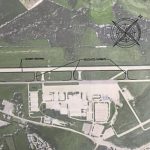
Since 1952, Golden Triangle Construction has been a heavy highway and utility contractor specializing in concrete production and paving, roller-compacted concrete and permeable pavement, excavation and grading, utilities, drilling, bridges and structures, retaining walls and foundations, road reclamation, and soil stabilization, among other skills.
“We probably do more than the average contractor of our type,” says Charles Niederriter, COO of Golden Triangle. “We subcontract out less work so we have greater control over the work we do.”
Despite self-performing more work than average, Golden Triangle runs a tight ship with minimal overhead. “We are pretty hands-on and have a small staff. We watch the day-to-day operations of each project closely,” says Niederriter.
Delivery methods vary but design/build is particularly popular. “It’s a faster solution to a problem, like the I-70 partial bridge collapse in Pittsburgh, where they needed to replace it quickly and didn’t have time to do a long design process,” says Niederriter.
Indeed the I-70 bridge project included two bridges, one of which had collapsed unexpectedly in December 2005. An emergency contractor removed the old bridge and Golden Triangle removed another bridge, and ended up being the winning bidder on the project that would replace both bridges.
“That was a design/build best value bid,” says Niederriter. “We had to submit a proposal that judges your bid based on price and various other criteria such as the speed at which you are going to do the work and the basic design of the structures. All of that is reviewed and graded based on numerous factors. We didn’t have to be the lowest price; we had to have the best total package and they selected us.”
It was a challenging project from start to finish. The designs had to be completed and the bridges built in one construction season, which was unheard of at the time. Getting ahead and staying in front of the deadlines became the paramount goal. “We were able to push these approvals in order to get the design done within just a few months when it normally takes a whole year by having weekly conference calls with the designers and the owners, the highway department,” says Niederriter.
Construction was ongoing with the design. “As the designers detailed the piers, we were able to start building the piers, before the rest of the bridge was designed. That allowed us to build the structures as each piece was designed, which is unusual,” says Niederriter.
Completing the project in this way required a great deal of trust among the team members. Once building commenced, everything had to fit properly and be designed for the loadings. It required some preliminary work and effort as well as ongoing coordination and teamwork.
“It was a very successful project from our standpoint and from the client’s,” says Niederriter. “The bridges were reopened within one construction season.”
A NEW KIND OF HIGHWAY
Another recently completed successful project took place in Uniontown, Pennsylvania, just south of Pittsburgh. It was the first major concrete overlay project on a highway in Pennsylvania. “It was unusual in that we milled the asphalt surface and replaced it with a six-inch concrete overlay,” says Niederriter.
The thick concrete overlay provided longevity to the road in a fairly quick process. Concrete is more durable than asphalt, but that’s not the only benefit.
“Concrete is a lot stronger per inch of thickness when compared to asphalt,” says Niederriter. “It allows the highway department to extend the life of that highway, and with the price of oil and our dependence on foreign oil, it makes sense to move to the types of products we can produce right here in our community.”
Generally speaking, it’s faster to build an asphalt highway than a concrete one—asphalt doesn’t have to cure like concrete does. That alone is a key reason why more communities don’t invest in concrete highways. However, it’s a greener, more sustainable product: the color of the concrete is light and reflects the sun, while asphalt has a higher heat index and absorbs the sun’s heat.
As part of its effort to have greater control over projects, Golden Triangle currently operates four of its own concrete batch plants. “We’re able to make job-specific concrete designs and have greater quality control of our materials,” says Niederriter.
Being a heavy highway contractor means that Golden Triangle has benefitted from some stimulus spending brought on by the American Recovery and Reinvestment Act—but that was only a temporary fix to a greater infrastructure issue in America today.
“We had quite a bit of stimulus work but that is actually finishing up this fall—the funding lasted for only a year or two,” says Niederriter. “Once that funding is gone there is nothing to replace it. It would take that level of funding on a consistent basis to address the infrastructure needs the country has right now.”
Indeed, shedding light on the importance of a well-funded infrastructure is something Golden Triangle regularly engages in. “We’re active in a political sense, but mostly in trying to educate our legislators on the importance of a long-term funding solution for infrastructure—not just in Pennsylvania but all over the country,” says Niederriter.
It’s not for lack of projects that Golden Triangle pursues that path—the company does plenty of private work as well—but because providing a strong infrastructure is integral to the overall economy as well as the safety and longevity of the backbone of the nation.
Having a diverse base from which to work as well as a strong history of projects completed successfully gives Golden Triangle an edge over the competition and a strong foot forward in the rebounding economy.
Click Here for the PDF of the article



 Roller Compacted Concrete offers tremendous opportunity for our industry. It may be used in commercial, industrial or street and local road applications. Before it can be used in the latter market, industry must be sure that PennDot will accept it as a paving alternative. Golden Triangle Consruction has been working very hard toward that goal, and they’ve placed RCC at some of their plants for material storage.
Roller Compacted Concrete offers tremendous opportunity for our industry. It may be used in commercial, industrial or street and local road applications. Before it can be used in the latter market, industry must be sure that PennDot will accept it as a paving alternative. Golden Triangle Consruction has been working very hard toward that goal, and they’ve placed RCC at some of their plants for material storage.